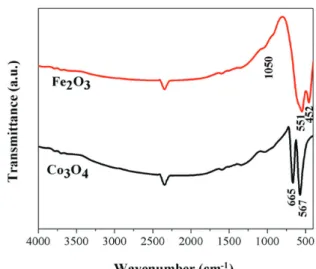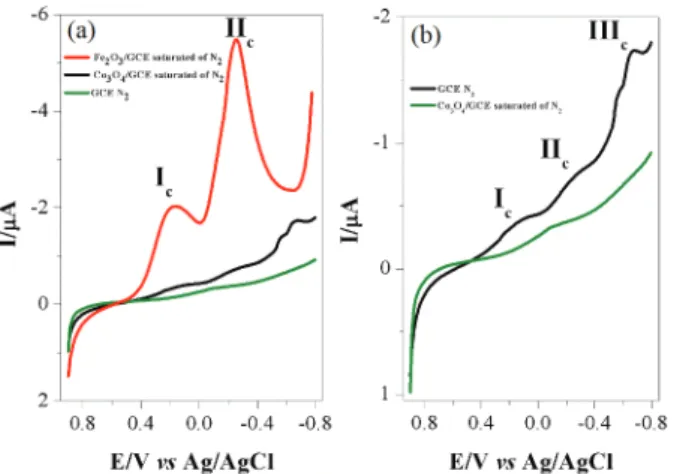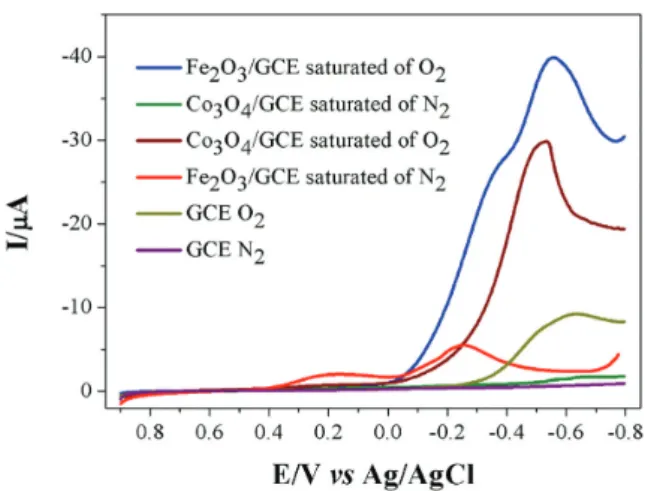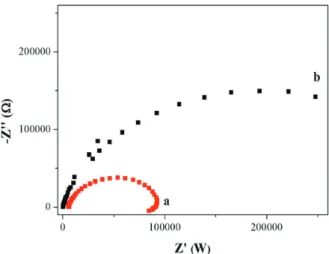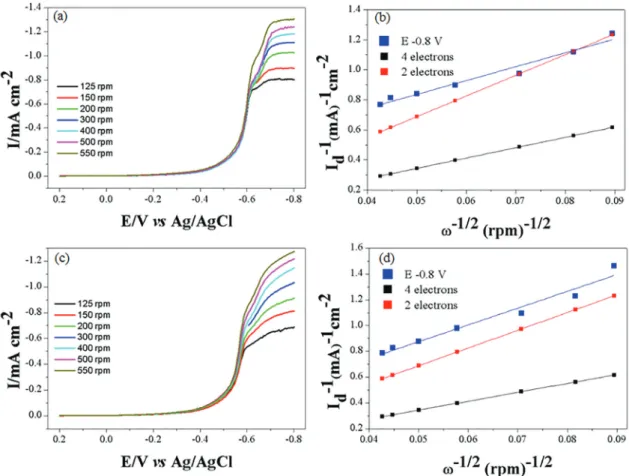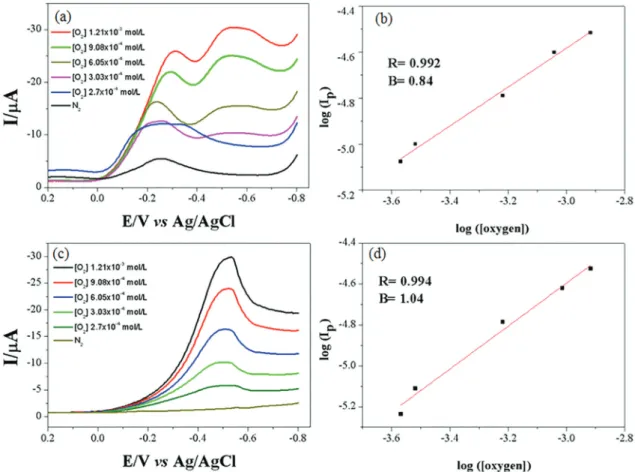Publisher’s version / Version de l'éditeur:
Vous avez des questions? Nous pouvons vous aider. Pour communiquer directement avec un auteur, consultez la première page de la revue dans laquelle son article a été publié afin de trouver ses coordonnées. Si vous n’arrivez pas à les repérer, communiquez avec nous à PublicationsArchive-ArchivesPublications@nrc-cnrc.gc.ca.
Questions? Contact the NRC Publications Archive team at
PublicationsArchive-ArchivesPublications@nrc-cnrc.gc.ca. If you wish to email the authors directly, please see the first page of the publication for their contact information.
https://publications-cnrc.canada.ca/fra/droits
L’accès à ce site Web et l’utilisation de son contenu sont assujettis aux conditions présentées dans le site LISEZ CES CONDITIONS ATTENTIVEMENT AVANT D’UTILISER CE SITE WEB.
Journal of the Brazilian Chemical Society, 12, pp. 2681-2690, 2019
READ THESE TERMS AND CONDITIONS CAREFULLY BEFORE USING THIS WEBSITE. https://nrc-publications.canada.ca/eng/copyright
NRC Publications Archive Record / Notice des Archives des publications du CNRC :
https://nrc-publications.canada.ca/eng/view/object/?id=547798b3-d72f-45a2-be14-35c191d91d55 https://publications-cnrc.canada.ca/fra/voir/objet/?id=547798b3-d72f-45a2-be14-35c191d91d55
Archives des publications du CNRC
This publication could be one of several versions: author’s original, accepted manuscript or the publisher’s version. / La version de cette publication peut être l’une des suivantes : la version prépublication de l’auteur, la version acceptée du manuscrit ou la version de l’éditeur.
For the publisher’s version, please access the DOI link below./ Pour consulter la version de l’éditeur, utilisez le lien DOI ci-dessous.
https://doi.org/10.21577/0103-5053.20190195
Access and use of this website and the material on it are subject to the Terms and Conditions set forth at
Nanoparticles of Fe
₂O₃ and Co₃O₄ as efficient electrocatalysts for
oxygen reduction reaction in acid medium
Alves, Ismael; Santos, José; Viégas, Deracilde; Marques, Edmar; Lacerda,
Cristina; Zhang, Lei; Zhang, Jiujun; Marques, Aldaléa
Article
J. Braz. Chem. Soc., Vol. 30, No. 12, 2681-2690, 2019 Printed in Brazil - ©2019 Sociedade Brasileira de Química http://dx.doi.org/10.21577/0103-5053.20190195*e-mail: aldalea.ufma@hotmail.com
Nanoparticles of Fe
2O
3and Co
3O
4as Efficient Electrocatalysts for Oxygen
Reduction Reaction in Acid Medium
Ismael C. B. Alves,aJosé R. N. Santos,aDeracilde S. S. Viégas,aEdmar P. Marques,b
Cristina A. Lacerda,bLei Zhang,a,c,dJiujun Zhanga,cand Aldaléa L. B. Marques *,a
aNúcleo de Estudos em Petróleo e Energia (NEPE), Laboratório de Pesquisa em Química Analítica (LPQA) and Laboratório de Análises e Pesquisa em Química Analítica de Petróleo e Biocombustíveis (LAPQAP),
Departamento de Tecnologia Química, Universidade Federal do Maranhão (UFMA), 65080-805 São Luís-MA, Brazil
bDepartamento de Química, Universidade Federal do Maranhão (UFMA), 65080-805 São Luís-MA, Brazil
cInstitute for Sustainable Energy, College of Sciences, Shanghai University, 200444 Shanghai, China
dEnergy, Mining & Environment, National Research Council of Canada, BC V6T 1W5 Vancouver, BC, Canada
This paper presents a comparative study about the oxygen reduction reaction (ORR) catalyzed by nanoparticles of Fe2O3 and Co3O4 applied on the surface of glassy carbon electrodes (GCE).
The nanoparticles were synthesized using the modified polymeric precursor method (Pechini). These two nanomaterials were characterized by Fourier transform infrared spectroscopy (FTIR) and X-ray diffraction (XRD) techniques. The estimated average particle sizes were 21 and 31 nm for Fe2O3 and Co3O4, respectively. Electrochemical impedance spectroscopy (EIS) showed that
Fe2O3/GCE has lower charge transfer resistance than Co3O4/GCE. The surface electrochemistry of
both Fe2O3/GCE and Co3O4/GCE was studied in the solution free of O2, and their corresponding
reaction mechanisms were analyzed. The electrocatalytic ORR activities of these two catalysts were studied by cyclic voltammetry (CV) and rotating disk electrode (RDE) in acidic solution. The results obtained by RDE indicated that both Fe2O3/GCE and Co3O4/GCE can catalyze the
ORR with a dominating 2-electron transfer process to produce H2O2, using a potential of −0.8 V.
These kinetic results indicate that Fe2O3/GCE is more efficient than Co3O4/GCE in terms of ORR.
Considering the low cost of these two non-noble metal catalysts, they may be used as viable alternatives for ORR electrocatalysts.
Keywords: electrocatalysis, metallic nanoparticles, iron oxide, cobalt oxide, oxygen reduction
Introduction
In electrochemical energy storage and conversion devices such as fuel cell and metal-air batteries, the applications of electrocatalysts for cathode oxygen reduction reaction (ORR) are of paramount importance.1,2
As recognized, ORR in aqueous solutions occurs mainly through two pathways: one is the direct 4-electron reduction from O2 to water (H2O), and the other is the 2-electron
reduction from O2 to hydrogen peroxide (H2O2). In general,
the ORR kinetics on electrodes is sluggish. To speed up
this reaction for a practical operation, electrocatalysts are necessary. Normally, platinum (Pt) and its alloys are used as electrocatalysts for ORR. However, Pt is expensive hindering its large-scale commercialization in electrochemical conversion technologies such as fuel cells and metal-air batteries.3 Thus, researchers have made great
efforts to replace Pt-based catalysts with non-precious metal ones for enabling the practical application of the technologies, and these metals have been considered for both, cathode4-6 and anode of fuel cells.7-9 Regarding
non-precious metal electrocatalysts, many types have been explored, including metal oxides, organometallic complexes, and so on.10
Nanoparticles of Fe
2O
3and Co
3O
4as Efficient Electrocatalysts for Oxygen
Reduction Reaction in Acid Medium
Ismael C. B. Alves,aJosé R. N. Santos,aDeracilde S. S. Viégas,aEdmar P. Marques,b
Among non-precious metal oxide materials, iron (Fe) and cobalt (Co) oxides have been extensively investigated as electrocatalysts for ORR. For example, Wu et al.11
synthesized iron oxide (Fe3O4) nanoparticles supported on
nitrogen-doped graphene airgel (Fe3O4/N-GAs), and found
its high catalytic activity towards ORR, and claimed that their catalyst had an even higher durability than the commercial Pt/C. Chen et al.12 reported that a nanostructured cobalt oxide
(Co3O4) supported on hollow carbon spheres (Co3O4/HCS)
was an efficient catalyst for ORR in basic media. Recently, iron oxide nanoparticles in different phases (Fe3O4, γ-Fe2O3,
α-Fe2O3 and α-FeOOH) forming a composite with reduced
graphene oxide aerogels,13 and cobalt oxide with
nitrogen-doped graphene (Co-N/G),14 were used as electrocatalysts,
showing good catalytic ORR performance.
The synthesis method can significantly influence the sizes of nanoparticles, and this is a determinant factor in the electrocatalytic ORR performance. The existing methods, such as sol-gel,15 liquid combustion,16 spraydrying,17,18
hydrothermal19,20 and the polymeric precursor are proved
to be efficient. Among them, the polymeric precursor method, also called Pechini,21-23 stands out as a promising
technique for the preparation of crystalline and nanometric metal oxides with controlled particle sizes. Actually, to our best knowledge, there is no work yet found for using this polymeric precursor method to synthesize ORR electrocatalysts, which is why we have chosen this method to synthesize the catalysts in this paper.
In this paper, we have synthesized nanoparticles of iron and cobalt oxides (Fe2O3 and Co3O4) using the polymeric
precursors method and explored their catalytic ORR performance in acidic medium. The synthesized catalysts were characterized using the techniques of Fourier transform infrared spectroscopy (FTIR) and X-ray diffraction (XRD). The electrocatalytic ORR activity of the catalyst-modified electrodes was evaluated by cyclic voltammetry (CV), linear scanning voltammetry (LSV), and rotational disk electrode (RDE). The electrochemical impedance spectroscopy (EIS) was also used to analyze the electron/mass transfer resistances related to the catalytic ORR process.
Experimental
Reagents
All reagents used in this work were analytical grade and used without further purification. Cobalt(II) chloride hexahydrate, iron(II) chloride tetrahydrate, citric acid, ethylene glycol, boric acid, sodium perchlorate monohydrate, and sodium hydroxide were all purchased from Merck (Darmstadt, Germany). Sulfuric acid and
Nafion® were purchased from Sigma-Aldrich (Saint Louis,
USA), acetic acid and phosphoric acid were purchased from Vetec (Saint Louis, USA). The study of pH influence on the electrochemical response was performed using the Britton-Robson (BR) buffer prepared in the usual way, i.e., by mixing solutions of phosphoric acid, acetic acid and boric acid, all 0.04 mol L–1, whose solution had a pH
close to 1.8. An appropriate amount of 2 mol L–1 sodium
hydroxide solution was added dropwise to the solution to adjust the pH as desired. All solutions were prepared using deionized water (18 MΩ cm resistance), purified by a Milli-Q system (Millipore Inc., USA).
Synthesis of nanoparticles of iron and cobalt oxides
The nanoparticles of the metal oxides (Fe2O3 and Co3O4)
were synthesized by the polymeric precursor method. First, 7.0 g of the metal precursor (cobalt(II) chloride hexahydrate or iron(II) chloride tetrahydrate) were added to 50 mL of water under constant stirring at 80 °C until the complete dissolution of the salt. Then citric acid (20.29 g for cobalt(II) chloride hexahydrate solution, or 16.96 g for iron(II) tetrahydrate chloride solution) was added with a mole ratio of metal to acid of 1:3 for the formation of metal citrate solution. The temperature was then raised to 120 °C, and ethylene glycol (12.18 g for cobalt(II) chloride hexahydrate solution, or 10.18 mL for iron(II) chloride tetrahydrate solution) was added in a ratio of the ethylene glycol to metal of 60:40 (%m/m) for polymerization to occur. The obtained gel was dried in an oven (ca. 100 °C) for 24 h to remove excess water. After the procedure above, the obtained material was subjected to a calcination process at a temperature of 300 °C for 2 h to form the puff, which was ground, and again calcined at 500 °C for 2 h for obtaining the metal oxides.21-23
Modification of working electrode and electrochemical measurements
For the modification of the glassy carbon electrode (GCE) with the catalysts, a suspension at the concentration of 3.0 × 10-3 mol L-1 of catalyst nanoparticles (Fe
2O3 or
Co3O4) in deionized water with 1% of Nafion® was prepared
under ultrasonication for 5 min at room temperature. Prior to modification, the GCE surface was buffed with alumina and rinsed with deionized water. After cleaning, a 15 μL aliquot of the catalyst suspension was deposited onto the GCE surface, and then the modified electrode was taken to the desiccator for vacuum drying. The catalyst loadings for both Fe2O3 or Co3O4 were approximately
Alves et al. 2683 Vol. 30, No. 12, 2019
The electrochemical experiments were performed using a potentiostat model PGSTAT 302 from Metrohm-Autolab. A conventional three-electrode cell containing the catalyst-modified disk GCE with a geometric surface (Ageom) of 0.07 cm2 as the working electrode was employed
for both the cyclic voltammetry and rotating disk electrode experiments. Ag(s)|Cl(s)|Cl– (KClsat) was used as the reference
electrode and a platinum wire as the counter electrode. For the measurements with rotating disk electrode, a controller of rotation from Autolab (motor controller) was used.
The O2-saturated standard solution was produced by
bubbling double distilled water with pure O2 at room
temperature for 1 h. The O2 content in the O2 saturated water
was taken as 1.21 × 10-3 mol L-1, calculated as recommended
by the literature.24-26 The electrochemical measurements
were carried out in a 25 mL cell with 10 mL solutions which were purged with pure nitrogen and kept under nitrogen atmosphere at room temperature.
Results and Discussion
Physical-chemical characterization of the catalysts
Infrared spectra (FTIR) of the synthesized catalyst materials (Fe2O3 and Co3O4) were recorded on a Shimadzu
IR Prestige-21 spectrometer in the wavenumber region of 400 to 4000 cm-1. The test samples were prepared in KBr
pellets (1%). The XRD analysis was performed using a Bruker D8 Advance diffractometer using Cu Kα radiation in the 2θ angle range between 10 and 80°.
Figure 1 shows the infrared spectra obtained in the region of 400 to 4000 cm-1 for Fe
2O3 and Co3O4 samples,
respectively. The spectrum obtained for Fe2O3 shows
intense bands at 452 and 551 cm-1, which are related
to the transverse stretching vibrations of Fe−O.27,28 The
weak band at 1050 cm-1 can be attributed to hematite,29
and the one at 2345 cm-1 can be attributed to air CO 2.
Similar behavior was observed by Eigler et al.30 For
Co3O4, the bands at 567 and 665 cm-1 are related to the
Co−O stretching vibrations. The presence of these bands supports the formation of the Co3O4 spinel network. The
band at 567 cm-1 corresponds to the stretching of the
Co3+−O bond, while the band at 665 cm-1 can be attributed
to the Co2+−O stretching vibration. These assignments are
in accordance with the literature,31,32 thus confirming the
formation of metallic spinel structure.
XRD analysis was performed to investigate the phase and structure of the synthesized catalyst materials. The diffractogram obtained for iron oxide (Figure 2) shows the diffraction peaks at 2θ of 24.2°, 30.2°, 35.6°, 41°, 49.5°, 54.1°, 57.5°, 62.4°, and 64.1°, corresponding to
the planes 012, 104, 110, 113, 024, 116, 018, 214, and 300, respectively, for α-Fe2O3 nanoparticles, which can
be easily indexed to their hexagonal phase, as reported by Mirzaei et al.21 The peak at 2θ of 43° is assigned to plane 400
of magnetite (Fe3O4).33-35 Cobalt oxide (Figure 2) exhibits
peaks at 2θ 19.1°; 31.3°; 36.8°; 38.5°; 44.9°; 55.7°; 59.4°; 65.2°; referring to planes 111, 220, 311, 222, 400, 422, 511, and 440, respectively.36,37 The positions of these peaks can
be indexed to Co3O4 structure in cubic spinel. This phase
is characteristic of the cubic face centered structure, which coincides with that presented by Gunnewiek et al.22 The
format of the diffractogram coincides with those reported in previous works.37,38
The crystallite dimensions were estimated by applying the Scherrer method39 (equation 1) to the diffractograms
shown in Figure 2.
(1) Figure 1. FTIR spectra (KBr) of the Fe2O3 and Co3O4 samples.
where d is the size of the crystallites (nm), λ is the wavelength of the Cu Kα radiation (0.154 nm), β is the width at half height in radians, and θ is the Bragg angle in the plane relative to the peak. The average sizes of the calculated crystallites are approximately 21 and 31 nm for the nanoparticles of Fe2O3 and Co3O4, respectively. These
results show the efficiency of the method in synthesizing the nanoparticles of the catalysts. Compared with those reported in literature, the catalyst nanoparticle sizes are smaller: Gunnewiek et al.22 obtained Co
3O4 nanoparticles
with a mean diameter of 36 nm, and Mirzaei et al.21 obtained
an approximate value of 70 nm for α-Fe2O3. Compared
with the sample obtained by hydrothermal method, the nanoparticle sizes of α-Fe2O3 crystallites were 45-65 nm,
which are larger than ours. Sahoo and Satpati31 also used
the hydrothermal method and obtained Co3O4 nanoparticles
with a mean size of 50 nm. All these results above show that the polymeric precursor method is more efficient in obtaining nanoparticles with smaller sizes.
Electrochemical behavior of GCE modified with Fe2O3 and
Co3O4
Figure 3a shows the cyclic voltammograms of GCEs modified with Fe2O3 and Co3O4, respectively, recorded
between −0.8 and 0.9 V vs. Ag(s)|Cl(s)|Cl- (KClsat), in BR
buffer pH 1.8, saturated with N2. For comparison, those
results with bare GCE are also displayed in the figure.
In Figure 3a, there is no significant redox process observed on the unmodified GCE electrode. Note that there is a small reduction wave around −0.1 V, which comes from the C=O group on the carbon surface. For Fe2O3/GCE, two
cathodic peaks can be observed, which are marked as: Ic and
IIc, located at 0.21 and −0.255 V vs. Ag/AgCl, respectively.
By referring to literature40,41 these peaks can be proposed
to the following two reactions:
Reaction Ic at 0.21 V: Fe2O3 + 2H+ + 2e− →
2FeO + H2O (2)
Reaction IIc at −0.255 V: FeO + 2e− +2H+ →
Fe + H2O (3)
Figure 3b shows the enlarged voltammogram of only Co3O4/GCE from Figure 3a, in which three processes
marked as Ic, IIc and IIIc can be clearly observed. These
three redox processes may be assigned to equations 4, 5 and 6, respectively, by referring to the literature42,43 for acidic
redox processes of Co3O4. Actually, Co3O4 is a mixed oxide
containing CoO and Co2O3, which can be expressed as
CoO.Co2O3. The process Ic at 0.143 V may be assigned to
Co3+/Co2+ according to equation 4. The process II c at
−0.261 V refers to Co2+/Co+ redox reaction expressed by
equation 5. The process IIIc at −0.66 V may be assigned to
the redox reaction of Co+/Co0.
Reaction Ic at 0.143 V: Co2O3+ 2H+ + 2e− → 2CoO + H2O (4) Reaction IIc at −0.261 V: 2CoO + 2H+ + 2e− → Co2O + H2O (5) Reaction IIIc at −0.66 V: Co2O + 2H+ + 2e− → 2Co + H2O (6)
Electrocatalytic ORR performance of both Fe2O3/GCE and
Co3O4/GCE
Figure 4 shows the cyclic voltammograms (CVs) of GCE, Fe2O3/GCE and Co3O4/GCE in BR buffer pH 1.8
saturated by oxygen (1.3 × 10-3 mol L-1). For comparison,
cyclic voltammograms in the absence of oxygen were also recorded. It can be seen that, although the unmodified GCE shows an insignificant ORR activity in the presence of oxygen, the electrode modified with Fe2O3 or Co3O4 gives
significantly enhanced ORR current, demonstrating that both Fe2O3 and Co3O4 have strong catalytic ORR activities.
The current densities obtained in this experiment for ORR by Fe2O3/GCE and Co3O4/GCE were 40 and 30 μA,
respectively, showing that the modification with iron oxide presents a significant increase in current densities. For Fe2O3/GCE, the electrocatalytic process occurs close to
the redox response of Fe3+ (peak II
c), indicating that the
Figure 3. (a) Linear scanning voltammograms (LSV) obtained in 0.1 mol L-1 BR buffer (pH 1.8) saturated with N
2 at GCE (olive-green
line), Fe2O3/GCE (red line) and Co3O4/GCE (black line) with a catalyst
loading of 0.643 mg cm-2; (b) GCE (olive-green line) and Co 3O4/GCE
(black line). Potential scan rate: 20 mV s-1. The scan directions for all
Alves et al. 2685 Vol. 30, No. 12, 2019
Fe2+ metal center is responsible for the electrocatalytic
process of ORR. Wu et al.11 obtained similar behavior
using Fe oxide nanoparticles supported on graphene. For the Co3O4/GCE, the process occurs near the peak IIIc, which
corresponds to Co3+/Co2+, indicating that this Co2+ metal
center is responsible for the electrocatalytic ORR activity. This result is similar to that reported by Chen et al.12
From Figure 4, it can also be observed that, under the same conditions, Fe2O3/GCE can give higher ORR than
Co3O4/GCE. For this phenomenon may have contributed
two factors, one is the higher intrinsic catalytic ORR activity of the former than the latter, and the second is the size effect of the catalyst nanoparticles. The average size of Fe2O3 particles is smaller than that of Co3O4, as analyzed
by diffractograms in Figure 2. The small-sized Fe2O3 can
have a larger contact surface, therefore, a higher catalytic current can be expected.44,45
Effect of potential scanning rate on ORR activity
Figure 5 shows the linear sweep voltammograms obtained at different potential rates from 5 to 500 mV s-1
in O2-saturated solution for oxygen reduction with
individually Fe2O3 and Co3O4 modified GCE in BR
buffer solution (pH 1.8). The voltammetric peak currents corresponding to the irreversible ORR process vary Figure 4. Cyclic voltammograms of GCE, Fe2O3/GCE and Co3O4/GCE
in the presence of N2 and O2. Purple curve: GCE N2; dark yellow curve:
GCE O2; red curve: Fe2O3/GCE in 0.1 mol L-1 BR buffer pH 1.8 saturated
with N2; blue curve: Fe2O3/GCE in O2-saturated solution; green curve:
Co3O4/GCE in N2-saturated solution; brown curve: Co3O4/GCE in
O2-saturated solution. Potential scan rate: 20 mV s-1.
Figure 5. (a) Linear sweep voltammetry (LSV) curves of ORR on Fe2O3/GCE obtained in 0.1 mol L-1 BR buffer pH 1.8 saturated with O2 at different
potential scan rates (5 to 500 mV s-1); (b) I
linearly with the square root of the potential scan rate (Figures 5b and 5d) for both Fe2O3/GCE and Co3O4/GCE.
This behavior suggests that the ORR catalyzed by these two catalysts is controlled by diffusion of the solution oxygen to the electrode surface.46
Electrochemical impedance spectroscopy
Figure 6 shows the Nyquist plots obtained by electrochemical impedance spectroscopy for Fe2O3/GCE
(Figure 6a) and Co3O4/GCE (Figure 6b) in oxygen-saturated
BR buffer solution (pH 1.8), respectively. The cell potential was controlled at −0.5 V vs. Ag|AgCl in the frequency range of 100 mHz to 100 kHz.
The plots shown in Figure 6 consist of typical semicircles,47 which represent the ORR charge transfer
resistances. The smaller the size of the semicircle, the faster the charge transfer kinetics of the catalyzed ORR.48-50 Therefore, the catalytic ORR activity of Fe
2O3/
GCE is higher than that of Co3O4/GCE. This result is
in consistence with those observed in Figures 4 and 5. Further quantitative measurements will be presented in the following sections.
Measurements on Fe2O3 and Co3O4 modified rotating disc
electrodes
The steady-state LSV curves were recorded at different rotational rates (rpm) of Fe2O3 and Co3O4 modified rotating
disc electrodes (RDEs); the results are shown in Figure 7a for Fe2O3/GCE and Figure 7b for Co3O4/GCE, respectively.
It can be observed that, with increasing rotation rate, the ORR currents are increased. The ORR current density (I)
on the RDE can be expressed as equation 7 according to Koutecky-Levich.51
(7) where I is the measured current density, Ik represents the
kinetic current density (absence of any mass transport effect) and Id is the limit diffusional current density, defined
by the following equation 8:
Id = B ω 1/2 = (0.201 n F A Do2/3 Co v-1/6) ω1/2 (8)
where n is the number of electrons involved in the ORR
per O2, F is the Faraday constant (96487 C mol-1), A is the
electrode area (0.07 cm2), D
o is the diffusion coefficient
(1.93 × 10-5 cm2 s-1), C
o is the solubility of O2 in the
solution (1.21 × 10-6 mol cm-3 taken from literature), v is
the kinematic viscosity of the solution (1.01 × 10-2 cm2 s-1),
and ω is the rotation rate of the electrode in rpm.
The graph of Id-1 versus ω-1/2, according to equation 8,
allows to estimate the apparent number of electrons transferred (n) for the electrocatalytic ORR. Figures 7b and 7d show the Koutecky-Levich plots at the −0.8 V potential for Fe2O3/GCE and Co3O4/GCE, respectively, and
the theoretical plots for 2- and 4-electron processes in the ORR process are also shown for comparison. According to the slopes obtained, the average ORR electron number calculated for Fe2O3/GCE is n = 1.8, and for Co3O4/GCE
is n = 1.7, respectively. These results suggest that the electrocatalysis of ORR by both Fe2O3/GCE and Co3O4/GCE
is dominated by a 2-electrons transfer process to produce H2O2. In literature,11,52,53 there is some difference in ORR
electron transfer numbers, either 2-electron or 4-electron transfer processes.
To further investigate the ORR kinetics, the Tafel slopes of the steady-state polarization curves for Fe2O3/GCE
and Co3O4/GCE (Figure 8) at the rotation rate of 300 rpm
were obtained, and also corrected for ORR mass transport. According to equation 7, the term “[(Id × I) / (Id – I)]” refers
to the kinetic current density Ik of the ORR process. This
current density is a result of the charge transfer process occurring between the surface of the catalyzed electrode and the solution oxygen, free of any mass transport effect. For Fe2O3/GCE, the Tafel slope obtained was 0.175 V dec-1,
while for Co3O4/GCE, the slope was 0.275 V dec-1. These
results indicate that Fe2O3/GCE is more favored than
GCE/Co3O4 in terms of their catalytic ORR activities.
The other possible reason may be the larger surface area of Fe2O3/GCE compared to that of Co3O4. Regarding
Fe2O3/GCE ORR catalysis, Fu et al.49 carried out a study
Figure 6. Nyquist plots for Fe2O3/GCE (a) and Co3O4/GCE (b) in the
presence of saturating O2 at a controlled potential of −0.5 V vs. Ag/
AgCl in the frequency range of 100 mHz to 100 kHz with an amplitude of 0.005 rms.
Alves et al. 2687 Vol. 30, No. 12, 2019
with different forms of nanoparticle iron oxides (α-Fe2O3,
α-Fe2O3-PPy and α-Fe2O3-C-N), and their Tafel slopes
are similar to our results. Regarding Co3O4/GCE ORR
catalysis, Liang et al.54 compared two electrodes
(Co3O4/N-rmGO and Co3O4/rmGO), showing that the
Co3O4/N-rmGO electrode presented a lower Tafel slope,
resulting in a higher catalytic activity.
Catalytic ORR current as a function of oxygen concentration
Figure 9 shows the linear sweep voltammograms (LSVs) of Fe2O3/GCE and Co3O4/GCE in the presence of
different oxygen concentrations. It can be observed that for both electrodes the electrocatalytic currents increased with increasing oxygen concentration in the test cell. From the CVs, plots of log (Ip) vs. log [O2] (Figures 9b and 9d)
were obtained, which showed linear dependencies in the O2 concentration range of 2.7 × 10-4 to 1.21 × 10-3 mol L-1.
This result suggests that Fe2O3 or Co3O4 modified GCE
electrodes can be used for analysis of O2 concentration in
aqueous solution. Conclusions
The electrochemically catalyzed oxygen reaction (ORR) is one of the most important reactions in many applications, particularly in fuel cells2 and
metal-air batteries.1 However, the currently practical
electrocatalysts are mainly based on precious metals (Pt, Pd, Ir, etc.), which are high cost. The development of highly active, stable and efficient, and cost effective Figure 7. (a) ORR LSV curves recorded on Fe2O3/GCE in O2-saturated BR buffer (pH = 1.8) at different electrode rotation rates from 125 to 550 rpm;
(b) Koutecky-Levich (K-L) plots for Fe2O3/GCE based on the data of (a); (c) ORR LSV curves for Co3O4/GCE under the same conditions as (a); (d) K-L plots
based on the data of (c). Potential scan rate: 5 mV s-1.
Figure 8. Tafel diagrams of ORR catalyzed by Fe2O3/GCE (red circle
line) and Co3O4/GCE (black square line). Data extracted from the curve
non-precious metal electrocatalysts is therefore needed. In this paper, two non-noble metal catalysts, Fe2O3 and
Co3O4 nanoparticles, were synthesized using the modified
polymeric precursor method (Pechini). These two nanomaterials were characterized by Fourier transform infrared spectroscopy (FTIR) and X-ray diffraction (XRD) techniques for their compositions and crystal structures. The estimated average particle sizes were 21 and 31 nm for Fe2O3 and Co3O4, respectively. For characterizing
the electrochemical activities, these two catalysts were individually employed to coat glass carbon electrodes for catalytic oxygen reduction reaction (ORR). Both cyclic voltammetry and rotating disc electrode (RDE) methods were employed to test the ORR activities of these catalysts. In particular, using RDE data and Koutecky-Levich theory, the results obtained indicate that both Fe2O3/GCE and Co3O4/GCE can catalyze ORR
with a dominating 2-electron transfer process to produce H2O2. The electrochemical impedance spectroscopy was
also used to obtain the charge transfer resistances of the ORR catalyzed by these two catalysts. In addition, the ORR Tafel slope for Fe2O3/GCE is lower than that of
Co3O4/GCE, indicating that the former is more active than
the latter. For fundamental understanding, the surface reaction processes on the electrode as well as their catalyzed ORR mechanisms are explored based on the experimental data and literature.
The result also shows a linear behavior between the catalytic current and the oxygen concentration, which suggests that these Fe2O3/GCE and Co3O4/GCE can be used
as modified electrodes for analysis of O2 concentration.
Overall, the results show that the nanoparticles of both Fe2O3 and Co3O4 have good catalytic activities toward
ORR, but the former is more efficient than that the latter. Considering the low cost of these two non-noble metal catalysts, they may be used as viable alternatives for ORR electrocatalysts.
Acknowledgments
The authors are grateful to CNPq (PQ 2017, Process 310664/2017-9), FINEP (Research Project RECOL 05/ Subproject NANOPET), ANP (Research Project PMQC/ BIOPETRO, No. 1.029/2016-ANP-007.639), and CAPES for the financial support and fellowships received. Figure 9. (a) LSVs at different oxygen concentrations for Fe2O3/GCE; (b) dependency of the logarithm Ip vs. the logarithm O2 concentration [O2] for Fe2O3/
Alves et al. 2689 Vol. 30, No. 12, 2019
References
1. Wang, Y. J.; Fang, B.; Zhang, D.; Li, A.; Wilkinson, D. P.; Ignaszak, A.; Zhang, L.; Zhang, J.; Electrochem. Energy Rev. 2018, 1, 1.
2. Wang, R.; Wang, H.; Luo, F.; Liao, S.; Electrochem. Energy Rev. 2018, 1, 324.
3. Zhang, L.; Niu, J.; Dai, L.; Xia, Z.; Langmuir 2012, 28, 7542. 4. Ren, C.; Li, H.; Li, R.; Xu, S.; Wei, D.; Kang, W.; Wang, L.;
Jia, L.; Yang, B.; Liu, J.; RSC Adv. 2016, 6, 33302.
5. Bezerra, C.; Zhang, L.; Lee, K.; Liu, H.; Marques, A.; Marques, E.; Wang, H.; Zhang, J.; Marques, A. L. B.; Electrochim. Acta 2008, 53, 4937.
6. Dias, V.; Fernandes, E.; da Silva, L.; Marques, E.; Zhang, J.; Marques, A.; Marques, A. L. B.; J. Power Sources 2005, 142, 10.
7. Costa, W. M.; Cardoso, W. S.; Marques, E. P.; Bezerra, C. W.; Ferreira, A. A. P.; Song, C.; Zhang, J.; Marques, A. L.; J. Braz. Chem. Soc. 2013, 24, 651.
8. Tian, N.; Lu, B. A.; Yang, X. D.; Huang, Y. H.; Huang, R.; Jiang, Y. X.; Zhou, Z. Y.; Sun, S. G.; Electrochem. Energy Rev. 2018, 1, 54.
9. Cardoso, W. S.; Dias, V. L.; Costa, W. M.; Rodrigues, I. A.; Marques, E. P.; Sousa, A. G.; Boaventura, J.; Bezerra, C. W. B.; Song, C.; Liu, H.; Zhang, J.; Marques, A. L. B.; J. Appl. Electrochem. 2009, 39, 55.
10. Higgins, D.; Zamani, P.; Yu, A.; Chen, Z.; Energy Environ. Sci. 2016, 9, 357.
11. Wu, Z. S.; Yang, S.; Sun, Y.; Parvez, K.; Feng, X.; Müllen, K.; J. Am. Chem. Soc. 2012, 134, 9082.
12. Chen, Z.; He, D.; Xu, X.; Liu, Z.; Huang, M.; Wang, X.; Jiang, H.; RSC Adv. 2016, 6, 34159.
13. Karunagaran, R.; Coghlan, C.; Tung, T. T.; Kabiri, S.; Tran, D. N.; Doonan, C. J.; Losic, D.; New J. Chem. 2017, 41, 15180. 14. Wang, Q.; Hu, W.; Huang, Y.; Int. J. Hydrogen Energy 2017,
42, 5899.
15. Xu, J.; Yang, H.; Fu, W.; Du, K.; Sui, Y.; Chen, J.; Li, M.; Zou, G.; J. Magn. Magn. Mater. 2007, 309, 307.
16. Epherre, R.; Duguet, E.; Mornet, S.; Pollert, E.; Louguet, S.; Lecommandoux, S.; Schatz, C.; Goglio, G.; J. Mater. Chem. 2011, 21, 4393.
17. Lima, S. A. M.; Sigoli, F. A.; Davolos, M. R.; Jafelicci, M. J.; J. Alloys Compd. 2002, 344, 280.
18. Silva, R. F.; Zaniquelli, M. E. D.; Thin Solid Films 2004, 449, 86.
19. Ren, S.; Ma, S.; Yang, Y.; Mao, Q.; Hao, C.; Electrochim. Acta 2015, 178, 179.
20. Sun, X.; Zheng, C.; Zhang, F.; Yang, Y.; Wu, G.; Yu, A.; Guan, N.; J. Phys. Chem. C 2009, 113, 16002.
21. Mirzaei, A.; Janghorban, K.; Hashemi, B.; Bonyani, M.; Leonardi, S. G.; Neri, G.; Ceram. Int. 2016, 42, 6136.
22. Gunnewiek, R. F. K.; Mendes, C. F.; Kiminami, R. H. G. A.; Adv. Powder Technol. 2016, 27, 1056.
23. Gharagozlou, M.; J. Alloys Compd. 2009, 486, 660.
24. Davis, J. C. In Chemistry and Physics of Aqueous Gas Solutions; Adams, W. A.; Greer, G.; Kell, G. S.; Desnoyers, J. E.; Oldham, K. B.; Atkinson, G.; Walkley, J., eds.; The Electrochemical Society: Princeton, NJ, USA, 1975, p. 393.
25. Chaves, J. A. P.; Araújo, M. F. A.; Varela, J.; Tanaka, A. A.; Ecletica Quim. 2003, 28, 2.
26. Ju, H.; Shen, C.; Electroanalysis 2001, 13, 789.
27. Cornell, R. M.; Schwertmann, U.; The Iron Oxides: Structure, Properties, Reactions, Occurences and Uses, 2nd ed.; Wiley:
Weinheim, 2003.
28. Suresh, R.; Prabu, R.; Vijayaraj, A.; Giribabu, K.; Stephen, A.; Narayanan, V.; Synth. React. Inorg., Met.-Org., Nano-Met. Chem. 2012, 42, 303.
29. Bashir, S.; Mccabe, R. W.; Boxall, C.; Leaver, M. S.; Mobbs, D.; J. Nanopart. Res. 2009, 11, 701.
30. Eigler, S.; Dotzer, C.; Hirsch, A.; Enzelberger, M.; Müller, P.; Chem. Mater. 2012, 24, 1276.
31. Sahoo, S.; Satpati, A. K.; J. Electroanal. Chem. 2017, 801, 416. 32. Wang, H. W.; Hu, Z. A.; Chang, Y. Q.; Chen, Y. L.; Zhang, Z.
Y.; Yang, Y. Y.; Wu, H. Y.; Mater. Chem. Phys. 2011, 130, 672. 33. Kamali, K. Z.; Alagarsamy, P.; Huang, N. M.; Ong, B. H.; Lim,
H. N.; Sci. World J. 2014, DOI: 10.1155/2014/396135. 34. Cao, R. B.; Chen, X. Q.; Shen, W. H.; Long, Z.; Mater. Lett.
2011, 65, 3298.
35. Adekunle, A. S.; Ozoemena, K. I.; Int. J. Electrochem. Sci. 2010, 5, 1726.
36. Shahid, M. M.; Rameshkumar, P.; Basirun, W. J.; Juan, J. C.; Huang, N. M.; Electrochim. Acta 2017, 237, 61.
37. Xu, C.; Wang, X.; Zhu, J.; Yang, X.; Lu, L.; J. Mater. Chem. 2008, 18, 5625.
38. Yang, X.; Fan, K.; Zhu, Y.; Shen, J.; Jiang, X.; Zhao, P.; Li, C.; J. Mater. Chem. 2012, 22, 17278.
39. Scherrer, P.; Nachr. Ges. Wiss. Goettingen, Math.-Phys. Kl. 1918, 2, 98.
40. Bazrafshan, H.; Tesieh, Z. A.; Dabirnia, S.; Touba, R. S.; Manghabati, H.; Nasernejad, B.; Powder Technol. 2017, 308, 266.
41. Cepriá, G.; Usón, A.; Pérez-Arantegui, J.; Castillo, J. R.; Anal. Chim. Acta 2003, 477, 157.
42. Oswald, H. R.; Asper, R.; Preparation and Crystal Growth of Materials with Layered Structures; Lieth, R. M. A., ed.; Reidel: Dordrecht, 1977, p. 73.
43. Barbieri, E. M. S.; Lima, E. P. C.; Lelis, M. F. F.; Freitas, M. B. J. G.; J. Power Sources 2014, 270, 158.
44. Gupta, A. K.; Gupta, M.; Biomaterials 2005, 26, 3995. 45. Kozhina, G. A.; Ermakov, A. N.; Fetisov, V. B.; Fetisov, A. V.;
Shunyaev, K. Y.; Russ. J. Electrochem. 2009, 45, 1170. 46. Nicholson, R. S.; Shain, I.; Anal. Chem. 1964, 36, 706.
47. Ribeiro, C. D. L.; Santos, J. G. M.; de Souza, J. R.; Pereira-da-Silva, M. A.; Paterno, L. G.; J. Electroanal. Chem. 2017, 805, 53.
48. Liang, Y.; Wang, H.; Diao, P.; Chang, W.; Hong, G.; Li, Y.; Gong, M.; Xie, L.; Zhou, J.; Wang, J.; Regier, T. Z.; Wei, F.; Dai, H.; J. Am. Chem. Soc. 2012, 134, 15849.
49. Fu, Y.; Wang, J.; Yu, H. Y.; Li, X.; Wang, H.; Tian, J. H.; Yang, R.; Int. J. Hydrogen Energy 2017, 42, 20711.
50. Sun, M.; Zhang, G.; Liu, H.; Liu, Y.; Li, J.; Sci. China Mater. 2015, 58, 683.
51. Bard, A. J.; Faulkner, L. R.; Electrochemical Methods: Fundamentals and Applications; Wiley: New York, 2001. 52. Wang, K.; Wang, R.; Li, H.; Wang, H.; Mao, X.; Linkov, V.; Ji,
S.; Int. J. Hydrogen Energy 2015, 40, 3875.
53. Mao, S.; Wen, Z.; Huang, T.; Hou, Y.; Chen, J.; Energy Environ. Sci. 2014, 7, 609.
54. Liang, Y.; Li, Y.; Wang, H.; Zhou, J.; Wang, J.; Regier, T.; Dai, H.; Nat. Mater. 2011, 10, 780.
Submitted: January 31, 2019 Published online: August 19, 2019
